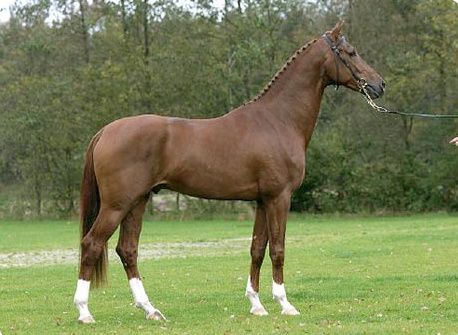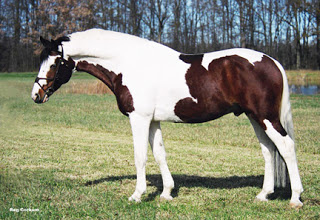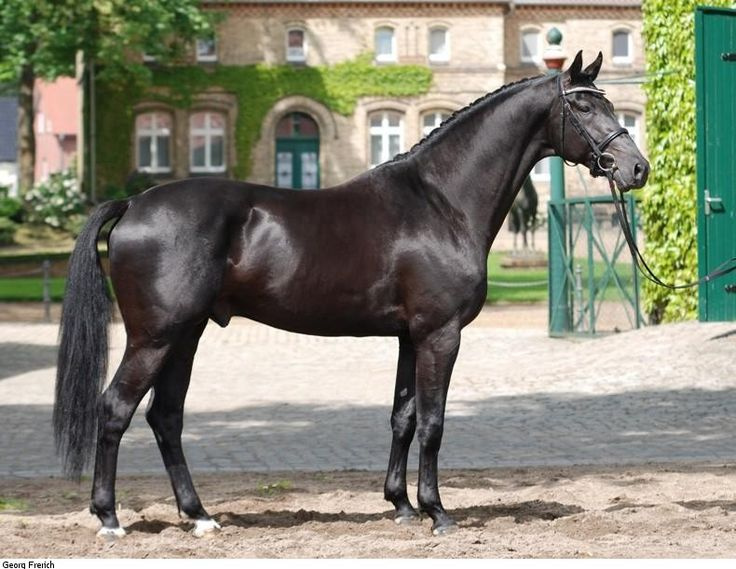here’s a random conformation picture
Very good conformation, low enough hocks that are still higher than the knees. You really wouldn’t want hocks level with or lower than knees as that would be some pretty long front cannons. Can you compare this to what you’re seeing?
45* as the most angled you want them, but most people are not very good judging angles other than “it’s not 70* but it’s also not 30*”, and easily see 50* and call it 45-ish. That 5* makes a big difference when it comes to pastern angles
Hind pasterns are almost always shorter and more upright than fronts and yes, judge them separately
That’s not downhill confo, that’s good functional confo 
Vivaldi, one of the top Dressage stallions

Contucci, hard to beat in the Dressage world
Hunters:
Palladio

Vallado is a top Derby stallion
Yes, hocks can be too high, but that’s different from being properly higher than knees on good front leg conformation






